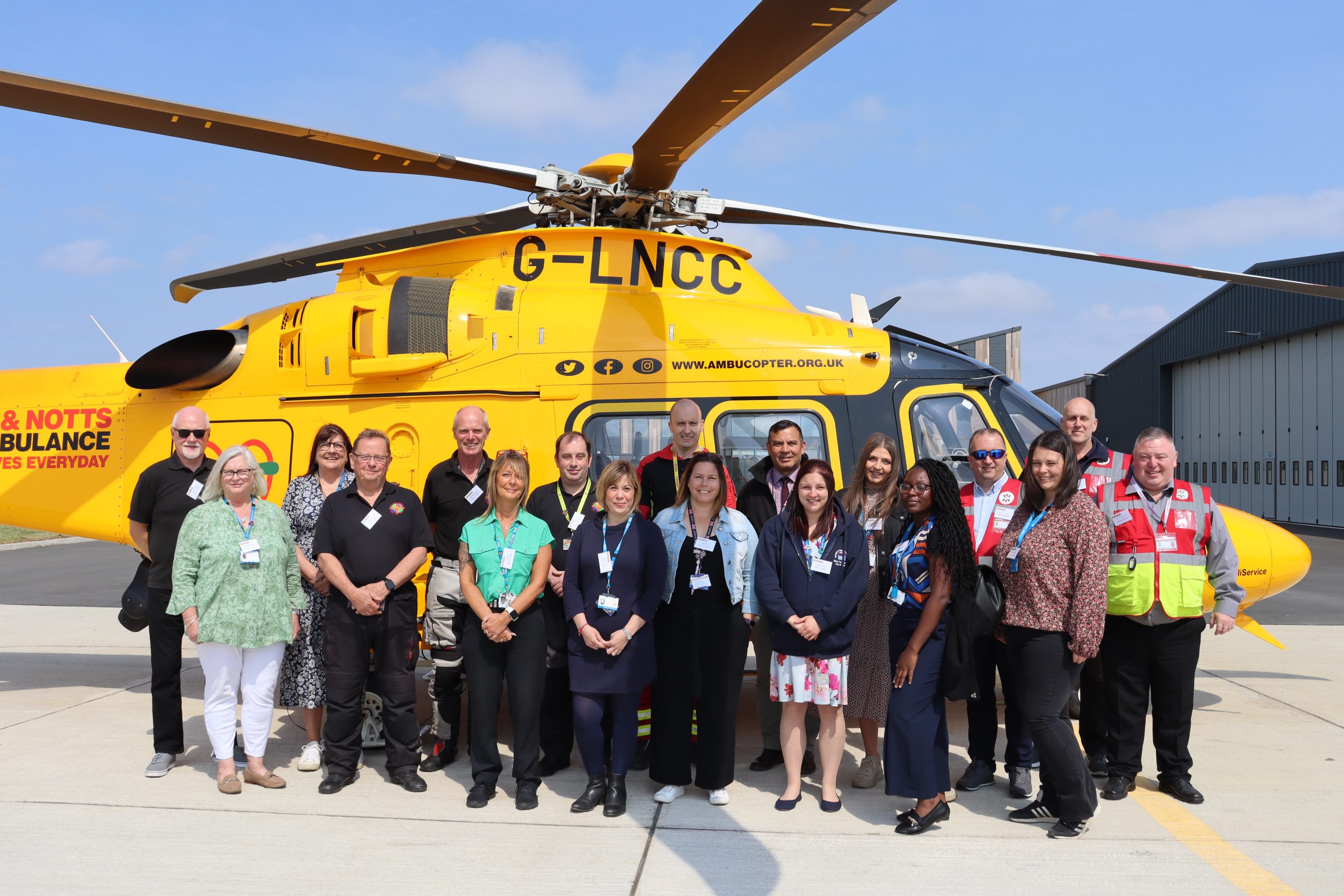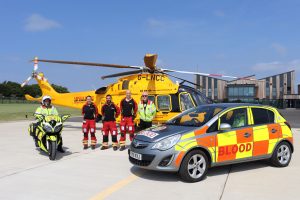LNAA celebrates ‘blood on board’ partnership

LNAA celebrates ‘blood on board’ partnership
Lincs & Notts Air Ambulance recently celebrated its special relationship with members of other health organisations who enable blood to be carried on board its helicopter and critical care cars.
It was a special moment as delegates from the ‘Blood on Board’ partnership came together to have a tour of the helicopter and a behind-the-scenes visit of LNAA headquarters.
Blood on Board was created in 2017, enabling LNAA to carry blood to the scene of critical incidents. Since then, 504 units of blood have been given to patients, from those involved in serious road traffic collisions to mothers in childbirth.
Dr Tom Eckersley, lead on the ‘Blood on Board’ initiative at LNAA said: “Blood products are given to patients who have suffered life-threatening bleeding most commonly as a result of trauma from a road traffic collision. Carrying blood products has undoubtedly allowed LNAA to save more lives by enabling patients who would have previously died from blood loss get to hospital. Giving blood also improves the condition of those arriving in hospital so they can undergo life-saving surgery.”
Carrying blood on board is made possible thanks to a joint agreement between LNAA, United Lincolnshire Hospitals Trust (ULHT) – (who provide the blood free of charge to the LNAA), Northern Lincolnshire and Goole Hospitals, Path links Pathology Service Provider, Lincolnshire Emergency Blood Bikers Service (LEBBS), Nottinghamshire Blood Bikes (NBB) and Nottingham’s Queen’s Medical Centre (QMC).
Once a donor has given blood it is separated into red cells and plasma at NHS Blood and Transplant (NHSBT) sites. These components are then stored until needed by the hospitals and Air Ambulance.
Each day, volunteers of the Lincolnshire Emergency Blood Bike Service ensure LNAA has fresh blood on board by collecting red blood cells and fresh frozen plasma (FFP) from Lincoln County Hospital and making a delivery to LNAA head-quarters.
Tom continued: “Initially we only received red blood cells but in 2020 we also started to carry (FFP). Now we carry 4 units of red blood and 4 units of FFP on our helicopter and in our critical care cars. If you are suffering life-threatening bleeding, it is essential to have both so that we can help the body to clot and stop bleeding and keep vital oxygen being delivered to the organs.”
Once thawed, the plasma only has a shelf life of 5 days and after this time has elapsed it must be discarded. To avoid a large amount of wastage that would be costly for ULH; as well as causing a dilemma throwing away a precious resource which had been voluntarily donated, all unused plasma is taken daily by NBB to the Major Trauma Centre at Nottingham’s Queen’s Medical Centre. There it becomes part of major haemorrhage packs, ready to be used within minutes on patients suffering major bleeding.
Adele Turner, Deputy Lab Manager Blood Transfusion at ULHT said: “The Blood on Board project is a huge collaboration between LNAA, ULHT, NLaG, Path Links, LEBBS, QMC Nottingham University Hospitals and Nottingham Blood Bikes. This service would not be possible without the people behind the scenes that allow the LNAA to deliver this capability. This ultimately save lives and improves patient outcomes.”
